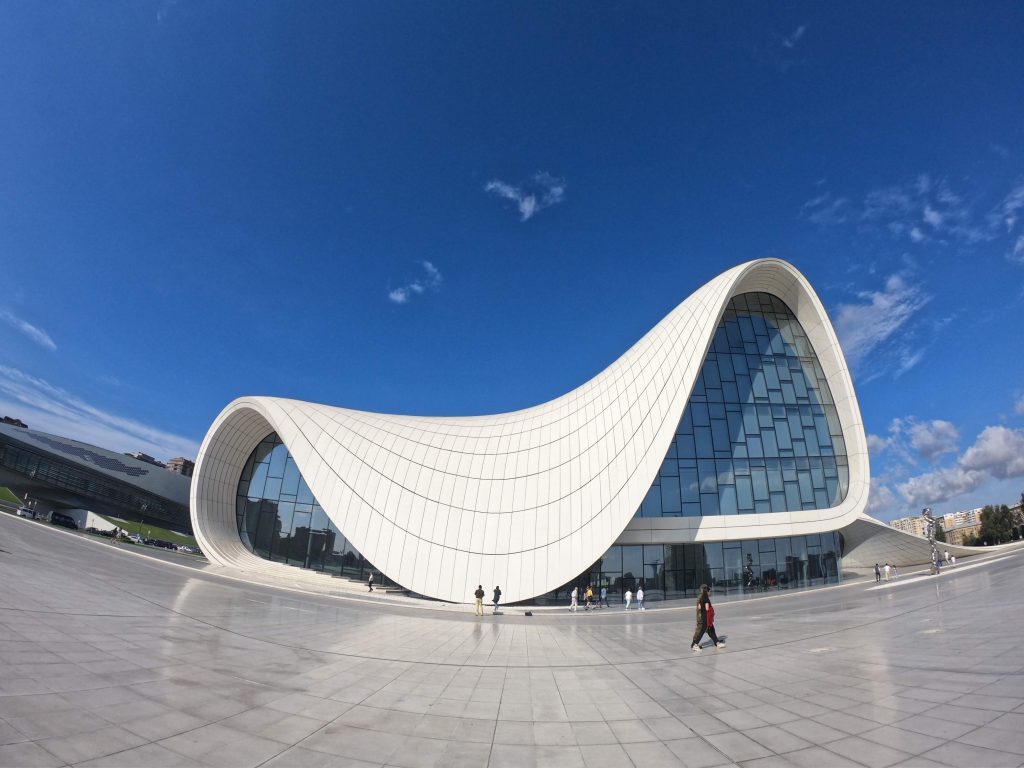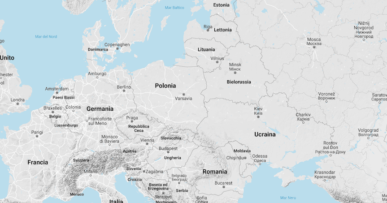In this article we will describe our four-days experience in the Azeri capital while we were waiting for the Caspian Sea Ferry towards Turkmenistan. We believe that a lot of travelers, aiming to cross the Caspian Sea by boat, got stucked in Baku for quite a long time so we thought it was important to share our experience with other people. Here, after a brief historical introduction, we will tell you what we did, what we visited, how to get to the main sights and if they are worth to visit or not!
Brief history of Baku
Although there are proofs that the area of Baku has been inhabited for long time, the city, for centuries, has never had a relevant international role. Destroyed by mongols and timurids, Baku flourished under the domination of Shirvanshah Khalilullah I (1417-65), who built a complex of buildings in the old city that still today are one of the most important sights. From the XV to the XIX centuries, Baku was contested between Russia and Persia but, with the treaties of the 1806, 1813 and 1828, the city became officially a Russian territory. The liberalisation of petrol extraction in 1872 exponentially developed the city, that increased its population of 1200% over 30 years and became, in 1905, the producer of 50% of the entire world petrol. The rapid development of the city also contributed to increase social tensions between rich capitalists and poor worker, who went on strike in 1904 and manage to sign the first contract between workers and managers of the entire Russian history. Today Baku is a rich multicultural city in continuous development where luxurious hotels, futuristic skyscrapers and English-style cabs are side by side with orribile petrol wells and the extremely polluted Caspian Sea.

Day 1
We arrived in Baku around lunchtime from Sheki and we immediately went to the hostel where we had planned to stay 5 nights. It may seem a lot of days but we needed time to rest and to plan our way forwards towards Türkmenistan which wasn’t not as easy as it may appear (click here to know more about the Caspian Sea Ferry). In Sheki we carefully choose the hostel for the time in Baku. We were looking for something affordable, possibly in the city centre, with an international environment…we ended up at Life Time Punjab, the WORST HOSTEL EVER (see our journey in Azerbaijan for better information).
Because we were tired from the bus journey from Sheki, we didn’t do much on the very first day. We spent most of the afternoon at the hostel and we just went out for dinner. In the area of Life Time Punjab Hostel there were few local restaurants so we asked a guy in the street where to go and he brought us to this place which revealed to be probably the most disappointing restaurant of our all journey in Azerbaijan. After dinner, very disappointed, we went to bed.

Day 2
On the second day, as first thing in the morning, we went to the Türkmenistan embassy. We had received an email from the embassy in Rome but it was all but clear and we weren’t sure whether the visa had been actually granted or not (see our article about visa in Turkmenistan). Arrived there at 11, nobody answered at the buzzer…that’s great we thought…but after 15 minutes a lady opened the door and confirmed that we had the visa. After that, we went to the Excelsior Hotel; the owner of the hostel in Sheki had contacted for us the president of the Azerbaijan wrestling federation (for whoever doesn’t know it, Azerbaijan is very good at wrestling) and apparently that day there were fighters training nearby the hotel and we were the “special guests”. There, we pretended to be super fan of wrestling whil in reality we had never seen a fight in all our life. It was an amazing experience, we met a lot of world champion fighters and famous Azeri journalists.

After lunch, we decided to go visiting the city so, after a quick look of the new town, which seemed to be a mix between Dubai and London, we headed towards the old city. There, we first wandered around a bit and after we went to the Shirvanishahs complex, which is one of the main attractions of the city.

While we were visiting the palace, we met Eveline, the girl we travelled with between Turkey and Georgia! We genuinely thought that she was following us but, reassured by her that she wasn’t, we decided to go around with her during the afternoon and meeting her for dinner later on after a quick rest at the hostel. That night we had dinner at a random place in the city centre and we went for a few drinks at Finnegans, apparently a quite famous irish pub in Baku. Very smoky but nice, we stayed there for two or three beers, we enjoyed the live music, which apparently is on everyday! After the drinks we went home, the next morning we would have gone to Qobustan, a quite famous area 70km far from Baku.
Day 3
Around 9am we left to Qobustan. We took the bus 125 from the city centre until the last stop towards the west of the city and from there the bus 195 until Qobustan (you can easily plan in advance your journey using google map though). Before going to visit the mud volcanoes and the petroglyphs, the two main reasons why people go to Qobustan, we decided to go to Alat, the main port of Baku, located next to Qobustan, where we were told we could have better information about the ferry tickets (if you haven’t already done it, click here to know more about the Caspian Sea ferry). If you go to Alat by bus, it’s quite a long journey, around 2 hours from Baku, and you have to run across the highway and then walk 2km because there is no actual bus stopping in front of the port.

We eventually managed to survive but, as we expected, we were given no information about the ferry tickets…the answer to every question was pretty much like “I don’t know” or “call me in the morning”, obviously in Russian. After this “very useful” trip to the port, we first went to the mud volcanoes and after to the petroglyphs taking a taxi near the port (that’s pretty much the only way you can go there, since there is no public transport going there and you may have to walk for hours in the desert). If you ever go to Baku, don’t miss the mud volcanoes, they are very unique! They are literally tiny volcanoes continuously erupting mud thanks to the gas trapped underneath…and no, the mud it’s not hot, it’s actually cold, we saw some people stealing it for a skin treatment.
Despite being a UNESCO heritage, we didn’t like the petroglyphs as much as the mud volcanoes but the museum nearby is really well made.

Just be careful, there is no infrastructures or public buses going to the petroglyphs. Therefore, if you don’t have a driver (or you are not in a taxi), from the ticket office you will have to walk up to the hill where the petroglyphs actually are and find your way back to the city somehow. We were not aware of that, our taxi driver left us at the ticket office so we had walk 30 min uphill under the sun. However, we managed to hitchhike back to the city and we quickly stopped at Bibi Heybat mosque on our way back home; nice but not amazing, don’t worry too much if you miss it.

That night we were knackered so we went to bed quite early. Relying exclusively on public transport to visit the mud volcanoes and the petroglyphs is hard (we were the only ones doing it, all the other tourists got a taxi in Baku) and tiring but definitely makes the visit more adventurous! It’s up to you deciding what kind of experience you want to get…
Day 3
On the third day, we went for luch at Niagara cafe. Totally recommended! probably the best restaurant for quality and price in the city centre. After lunch, we went to Heydar Aliyev centre, a sort of futuristic building in the centre of Baku, where we found a very nice photographic exhibition.

We then headed back towards the old town. We enjoyed walking along the promenade and, around sunset, we met Eveline at the flame towers, the other main attraction of Baku. We recommend you to go there around sunset so that you can enjoy the view of the enlightened city from the panoramic viewpoints and the lights shows on the towers.

We didn’t do much that night, we were still very tired from the day before. However, we decided to go all together to Absheron peninsula the day after.
Day 4
Thus, on the fourth day, early in the morning, we met to go to Ateshgah fire temple. Once a Zoroastrian temple, the fortified building visible today was rebuilt in the XVIII century by Indians Shiva’s adepts. We went there by public transport (metro and bus) and, as per Qobustan, you can plan your journey in advance with google map. It’s quite a long journey but the temple it’s worth to visit so we recommend you to go there if you have time.

After the visit we took a taxi to Mərdəkən, in the north of the Absheron peninsula, where we visited Pir Həsən and Mir Mövsöm Ziyarətgah. Both are quite interesting, but the latter is definitely the one not-to-miss if you go there! In fact, it’s one of the most important shrine in Azerbaijan as well as a famous pilgrimage site.

After the visits, we went for lunch and we tried to call once again the port even though over the previous day nobody had answered. However, this time somebody answered and said “tonight there is a boat to Türkmenistan”. Wow! We couldn’t believe that…after lunch we rushed home to pack our stuff and we took a taxi (30 manat) to Alat, we wouldn’t have had time by bus. We were super excited, we were going to Türkmenistan, one of the most isolated countries in the world along with Eritrea and North Korea! However, of course, the unexpected events were not finished….




